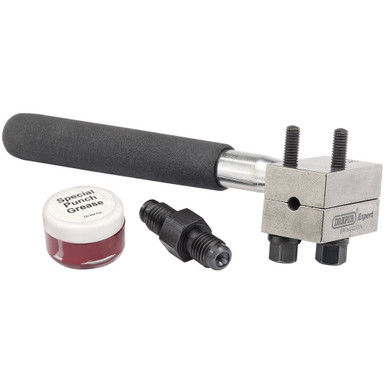Little Dog
A2OC Donor
I responded in a bit of a rush last night, I was cooking at the time. The info I provided explains my reservations. However I think your question relates to the thread on the male union and how it connects with the female?
All of the male unions I fit have an unthreaded section at the end. The only female thread I have to refer to looks like it has been drilled for fluid flow, drilled out for tapping and to form the flare seat and then tapped finishing with a plug tap. The thread does not quite reach the bottom and there is is very short unthreaded section before the flare seat. The unthreaded portion of the male unions is probably there to stop the male thread bottoming out on the thread runout and uncut portion of the female thread before the flare is fully compressed.
As to why your new male unions have the unthreaded section under the head I can't say; I've only ever seen bleed nipples machined like that. Will they bottom out before the flare is compressed? I can't tell but you need to check it out.
Did a bit of checking on my components:
The total depth of the female component is around 11mm with 9mm threaded
The total length of the male component under the head is 11mm with 9mm threaded
Fit the flare hand tight then fully tighten and the flare compresses a further 0.6 mm, the final compressed height of the flare is around 2.5mm
Do the sums and I have about 6mm of male and female thread engaged. The male thread stops about 3mm before the bottom of the female thread so can't bottom out then there is a further 4.5 mm including 2.5 mm of flare when the two components are torqued up. it all works but the 6 mm of engaged thread was a bit of a suprise.
Your connectors would be a bit close at 0.5 mm from the end of the female thread but with 8.5 mm of thread engaged. Bosch female threads may have different dimensions.
After all of that perhaps the easiest thing for you to do is to fit one and see if you get a finished flare height of 2.5 mm? Or Drimel off the flares and do it all correctly?
All of the male unions I fit have an unthreaded section at the end. The only female thread I have to refer to looks like it has been drilled for fluid flow, drilled out for tapping and to form the flare seat and then tapped finishing with a plug tap. The thread does not quite reach the bottom and there is is very short unthreaded section before the flare seat. The unthreaded portion of the male unions is probably there to stop the male thread bottoming out on the thread runout and uncut portion of the female thread before the flare is fully compressed.
As to why your new male unions have the unthreaded section under the head I can't say; I've only ever seen bleed nipples machined like that. Will they bottom out before the flare is compressed? I can't tell but you need to check it out.
Did a bit of checking on my components:
The total depth of the female component is around 11mm with 9mm threaded
The total length of the male component under the head is 11mm with 9mm threaded
Fit the flare hand tight then fully tighten and the flare compresses a further 0.6 mm, the final compressed height of the flare is around 2.5mm
Do the sums and I have about 6mm of male and female thread engaged. The male thread stops about 3mm before the bottom of the female thread so can't bottom out then there is a further 4.5 mm including 2.5 mm of flare when the two components are torqued up. it all works but the 6 mm of engaged thread was a bit of a suprise.
Your connectors would be a bit close at 0.5 mm from the end of the female thread but with 8.5 mm of thread engaged. Bosch female threads may have different dimensions.
After all of that perhaps the easiest thing for you to do is to fit one and see if you get a finished flare height of 2.5 mm? Or Drimel off the flares and do it all correctly?



